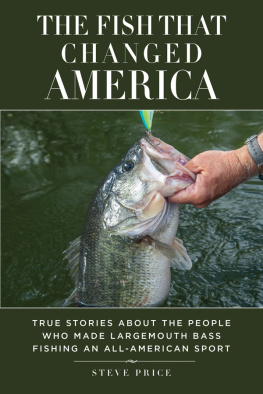Saul Bass
SAUL
BASS
ANATOMY OF
FILM DESIGN
JAN-CHRISTOPHER HORAK

Copyright 2014 by The University Press of Kentucky
Scholarly publisher for the Commonwealth,
serving Bellarmine University, Berea College, Centre College of Kentucky,
Eastern Kentucky University, The Filson Historical Society, Georgetown
College, Kentucky Historical Society, Kentucky State University,
Morehead State University, Murray State University, Northern Kentucky
University, Transylvania University, University of Kentucky, University of
Louisville, and Western Kentucky University.
All rights reserved.
Editorial and Sales Offices: The University Press of Kentucky 663 South Limestone Street, Lexington, Kentucky 40508-4008
www.kentuckypress.com
Library of Congress Cataloging-in-Publication Data
Horak, Jan-Christopher.
Saul Bass : anatomy of film design / Jan-Christopher Horak.
pages cm. (Screen classics)
Includes bibliographical references and index.
Includes filmography.
ISBN 978-0-8131-4718-5 (hardcover : alk. paper)
ISBN 978-0-8131-4720-8 (pdf)ISBN 978-0-8131-4719-2 (epub)
1. Bass, SaulCriticism and interpretation. I. Title.
PN1998.3.B377H68 2014
This book is printed on acid-free paper meeting the requirements of the American National Standard for Permanence in Paper for Printed Library Materials.

Manufactured in the United States of America.

| Member of the Association of
American University Presses |
Contents
Introduction
Qui tes-vous, Saul Bass?
The Forty-First Academy Awards ceremony took place on 14 April 1969 at the Dorothy Chandler Pavilion, on what used to be Bunker Hill in downtown Los Angeles. It was the first Oscar ceremony to be broadcast worldwide and the first held at that location. As usual, it was a star-studded affair. Katharine Hepburn was nominated as best actress for the second year in a row, this time for The Lion in Winter, an award she would have to share with Barbra Streisand for Funny Girlthe only time there has been a tie in this category. Saul and Elaine Bass, too, were present at the awards ceremony, since the designer was nominated in the best documentary short category for Why Man Creates (1968). The couple rode to the Chandler in a rented limousine together with USC graduate student and Bass advisee George Lucas, who had been an assistant on the production. Basss competitors were The House that Amanda Built (Fali Bilimoria), The Revolving Door (Lee R. Bobker), A Space to Grow (Thomas P. Kelly Jr.), and A Way out of the Wilderness (Dan E. Weisburd). Given his longtime work in the film industry, Bass was heavily favored to win. At the ceremony, Bass sat in an aisle seat at stage left, ten rows from the podium; Elaine was next to him in a light-colored chiffon dress. Actors Diahann Carroll and Tony Curtis read out the names of the nominees for best documentary and best short documentary, respectively. When Tony Curtis called out Basss name as the winner, he bounced up to the stage, despite the wooden cane that preceded his every step. Curtis handed the Oscar to Bass, who was wearing a traditional tuxedo, in contrast to Curtiss mod outfit. Bass took the Oscar in his right hand while balancing his weight with his left hand on the cane. He bent over the microphone and, in an uncharacteristic moment of brevity, said, Thank you, thank you very much. Then he quickly walked offstage.
In hindsight, we can see that Bass deserved to win for what would be his greatest cinematic achievement, although his largely avant-garde work certainly challenged the Academys notions of genre. Indeed, the category Best Documentary, Short Subjects hardly describes Basss free-form essay, a hodgepodge of film notes that asks many more questions than it answers. And what makes it a documentary? The film includes several forms of animation and mostly staged sequences. In fact, it is a modernist romp, at moments seemingly incoherent and yet also brilliant in its open-endedness; its fragmentation forces the viewer to engage in the construction of meaning, thus fulfilling the promise of every modernist work to make the audience an active participant. In addition to the Academy Award, Why Man Creates won numerous film festival and other awards, as well as being placed on the National Film Registry of the Library of Congress in 2002, designating it a national treasure.
But the somewhat tortured production history of the film also points out the pitfalls of having a corporate sponsor for such a personal and highly idiosyncratic project. In Basss most cynical evaluation of the film, he admitted to a group of AT&T executives: I think nowthat the most creative thing about the film was that I found a rationalization that enabled me to convince the client, to allow me to make the film.work to pay for his own personal films. After all, Bass had grown up in the Hollywood film industry, where no one invested their own money. Paradoxically, despite the insider status that an Academy Award seemingly represented, Bass remained an outsider in the movie industry, for several reasons. First, he was a graphic designer who had essentially created his own job description in a highly regulated system of film production. Second, his own aesthetic ambitions to bring high art to an often resistant Hollywood industry set him apart. Third, he sought the company of like-minded professionals, mostly producer-directors who had declared their independence from the classic Hollywood studio system.
Seen from our perspective in the twenty-first century, Saul Bass seems to define an era. As a designer of studio publicity, movie posters, title sequences and montages, commercials, and corporate logos from the 1940s to the 1990s, Bass heavily influenced the look of both film advertising and Hollywood films. Basss poster designs and his credit sequences for Hollywood feature films were extremely innovative in terms of their formal design, use of iconography, and narrative content. His graphic work resembled no one elses in Hollywood, and his film credits changed forever how audiences looked at the opening minutes of a film. Simultaneously, all his film-related work incorporated aesthetic concepts borrowed from modernist art, translating them into new commercial modes of address and thereby transforming film industry conventions that had remained relatively stagnant for decades. Basss designs influenced not only other studio publicity designers and filmmakers but also a whole generation of young designers that he personally trained in his studio. Among those who started their careers with Saul Bass were Thurston Blodgett, Paul Bruhwiler, Vincent Carra, John Casados, Morton Dimondstein, Vahe Fattal, Augustine Garza, Joel Katz, Karen Lee, Henry Markowitz, Michael Mills, Dave Nagata, Ted Piegdon, Gay Reinecke, Clarence Sato, Arnold Schwartzman, Mamoru Shimokochi, G. Dean Smith, Jay Toffoli, Todd Walker, Don Weller, and Howard York.
At a time when Hollywoods Taylorized system of film production called for extreme specialization within the work flow, Saul Bass was, uniquely, a generalist. He burst onto the creative floors of the film production factory and argued for the importance of the designer in the production process. Because of his aesthetic influences and the particular moment of his arrival in a changing Hollywood, Bass was able to cross over into other fields of film production, from designing advertising and publicity posters to creating title sequences and montages and eventually directing a Hollywood feature film. Basss career trajectory thus exemplified a trend in 1950s Hollywood and beyond that allowed designers to raise their status in the caste system that pervaded the Los Angeles film studios. Basss intervention into the Hollywood film production process through creative titling complicates our notions of who is responsible for the filmic text in the still rather structured Hollywood system: the director or a collective? But it also complicates our ability to read that text, given that its muddled authorship opens it up to multiple narrative interpretations. Basss high art sensibility in all his work for the American studios demands attention, particularly because his strategy of elevating a productions aesthetic value furthered product differentiation in the marketplace, which became a necessity once the Paramount Consent Decree ended studio control of the movie theaters. In fact, Basss career can only be understood within the context of the breakdown of the old Hollywood studio system, which was eventually replaced by a system of freelance artists under contract. Bass, as an outsider, was at the forefront of this development.
Next page














